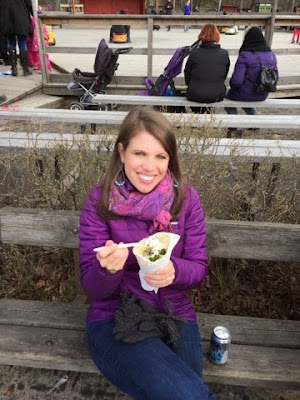As usual, Sweden never ceases to surprise me with some of their traditions and celebrations, and Easter did not disappoint. While there were many of the familiar traditions; such as candy, colored eggs and Easter egg hunts, I was thrown off when I started seeing witches and feathers tied to birch branches adorning all of the stores in Sweden. What?!?...what do witches have to do with Easter? I was even more confused when Cyle's colleagues warned him to have candy on-hand as it is common for children to dress up and beg for candy the Thursday before Easter (much like we do at Halloween).
Easter Witches

Today, it's a mix of old and new traditions as it is common to see children dress up in rags and old clothes, too-big skirts and shawls and go door to door with a copper kettle looking for treats (much like American trick-or-treating).
Påskris: Easter Twigs
Several weeks before the Easter holiday, I started noticing that every flower shop was selling twigs decorated with brightly colored feathers. Soon, almost every home, store and restaurant had vases with the brightly decorated twigs.
Easter Sunday, we met Michael and Natalie for an Easter Church service. The church we attended was affiliated with the Church of England. While we were not accustomed to many of the traditions associated with the church service, we all enjoyed the experience and message.



After church, we met Nico and Delfi for an Easter brunch. The brunch had many of the traditional staples that are enjoyed by Swedes at Easter. It wasn't much a surprise when we discovered pickled herring was at the heart of the Easter meal, but this time was accompanied with eggs with a variety of toppings including shrimp and caviar sauces. Another traditional dish that we all sampled was 'Janssons Frestelse' which translates to ‘Jansson’s Temptation’. It is a creamy casserole including potatoes onions and anchovies. We all decided we weren't big fans of this dish.


Like other Swedish holidays we have celebrated, it was fun to combine our American traditions while experiencing the traditions of Sweden. It made for a fun and memorable Easter holiday.
Glad Påsk from the Graber Family!













No comments:
Post a Comment